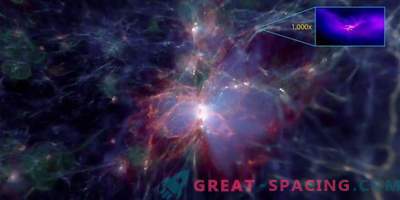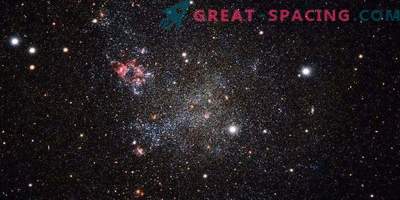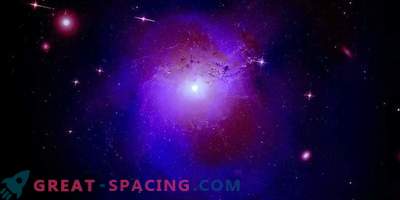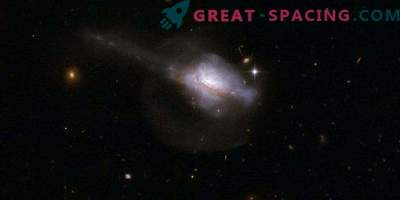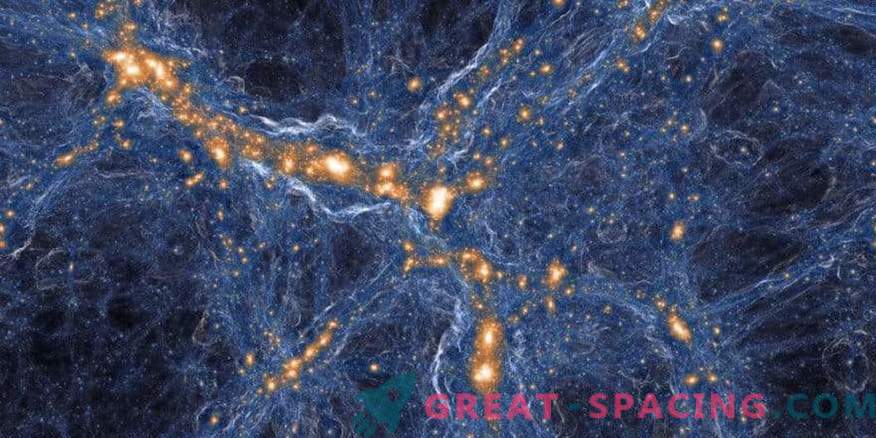
New computational methods allowed us to create the most detailed modeling of the scale of the Universe. The tool offers up-to-date information about the role of black holes in the distribution of dark matter, the process of creating and distributing heavy elements, as well as the occurrence of magnetic fields.
Model IllustrisTNG is considered the most advanced universal simulator. Details and scale allow us to study the formation of galaxies, their development and growth in tandem with an active process of stellar birth.
With a telescopic survey of galaxies, scientists can measure only certain characteristics and a specific number of objects. Simulation allows you to track all the properties for all galaxies. Moreover, the researchers get a view not only on the modern galactic "appearance", but also view its entire history.
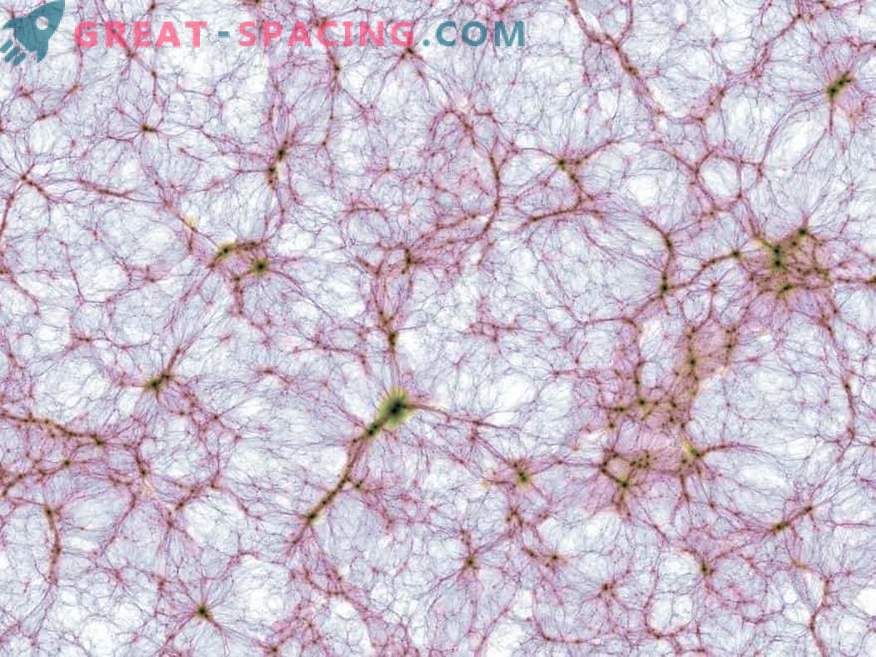
A thin section of the large-scale space structure in an IllustrisTNG simulation. Brightness indicates that the density and color of the mass correspond to the average gas temperature of a conventional (baryonic) substance. The area covers 1.2 billion light years. This is the largest magnetohydrodynamic simulation of the formation of galaxies, containing more than 30 billion volume elements and particles
A thin section of the large-scale space structure in an IllustrisTNG simulation. Brightness indicates that the density and color of the mass correspond to the average gas temperature of a conventional (baryonic) substance. The area covers 1.2 billion light years. This is the largest magnetohydrodynamic simulation of the formation of galaxies, containing more than 30 billion volume elements and particles Over the development, testing and analysis of new project data, employees of the Massachusetts Institute of Technology and the Institute of Astrophysics and Space Research named M.K. Kavli. The high resolution of IllustrisTNG in combination with a complex model of galactic formation made it possible to examine in detail the problems of magnetic fields.
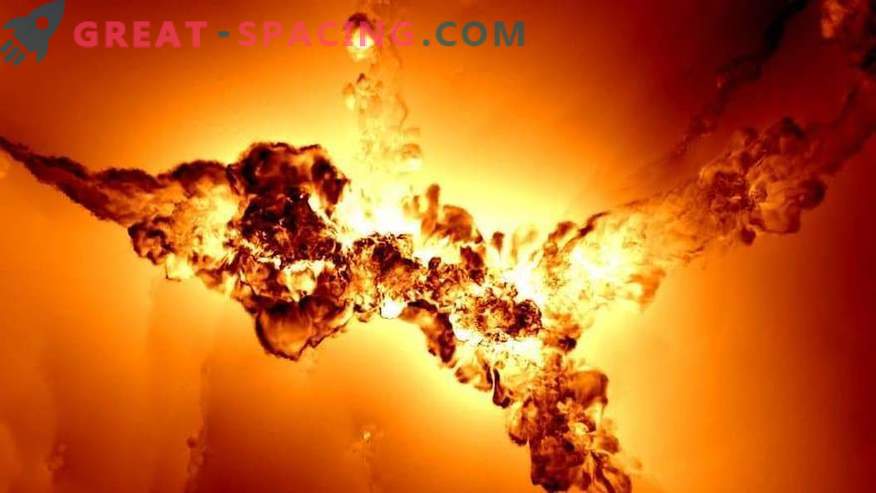
Tracking gas velocity in a thin section with a thickness of 100 kiloparsec. This is the second most massive cluster in the TNG100. In black areas, the gas practically does not move, and in the white areas it exceeds 1000 km / s. It demonstrates the contrast between the movement of gas in cosmic filaments and fast chaotic movements from a supermassive black hole.
Simulation of a realistic Universe
IllustrisTNG is the receiver of the original Illustris simulation created by the same research team. It has been updated to add some physical processes that play a key role in the formation and evolution of galaxies.
The project also creates a model of a cubic universe, which is inferior in size to ours. The model tracks the formation of a million galaxies with almost 1 billion light years one way.
The cosmic network of gas and dark matter creates galaxies that resemble real shapes and sizes. For the first time, hydrodynamic modeling was able to directly show the details of creating clusters.
The model also predicts how the spacecraft will change over time. The main attention was paid to the dark matter underlying the whole space. It even turned out to predict the effect of supermassive black holes on the distribution of matter on a large scale.
Astrophysics with code and supercomputer
The project required the creation of a powerful version of the highly parallel cosine AREPO code. It was used on the fastest German computer, Hazel Hen. To carry out one of the two main simulations, the team had to connect more than 24,000 processors. New simulations have provided more than 500 terabytes of information, the analysis of which will take many years.
Supermassive black holes suppress stellar birth
In one study, it was possible to show the effect of black holes on galaxies. Star formation causes them to shine blue from young objects. However, a sudden evolutionary shift occurs and the activity fades out. Then the galaxy is filled with red old stars and dies.
The only physical object that can lead to this is supermassive black holes. Their rapid outflows accelerate to 10% of light speed and affect star systems.
New results for galactic structures
IllustrisTNG improves the understanding of the hierarchical structure of the galactic formation. Theorists believe that everything begins with the appearance of small galaxies, which merge into larger objects. Numerous collisions tear apart galaxies and scatter stars to create new galaxies. Now IllustrisTNG will help check out the forecasts.

